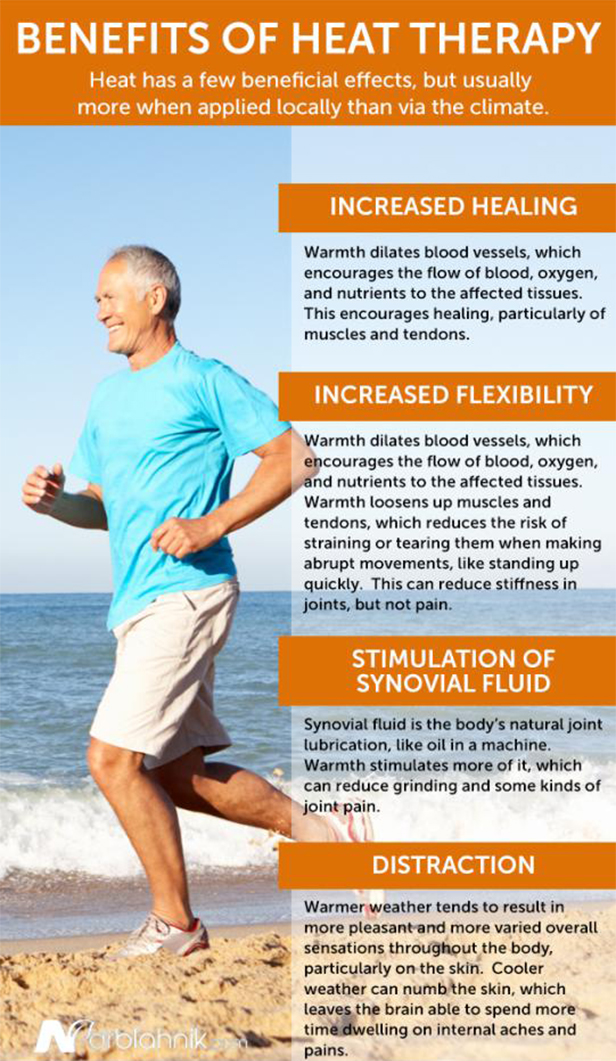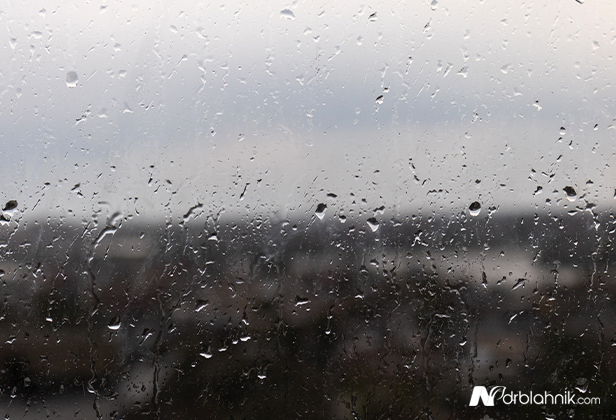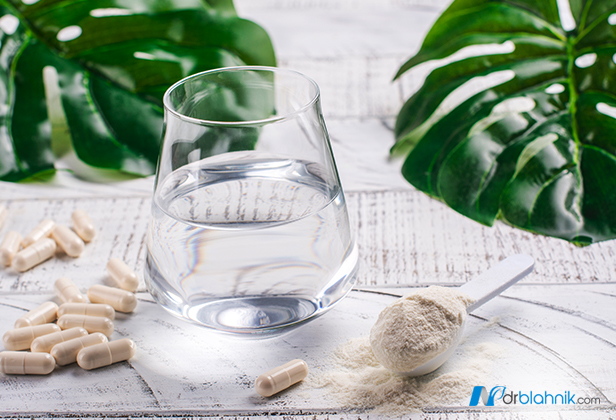

Whether you’re just starting to get older and feel the aches and pains that develop in your joints, or you’re dealing with decades of arthritis, you may be wondering what environmental factors influence joint pain. Joint pain can be implacable, difficult to treat, and annoying to deal with, so anything you can do to minimize it is beneficial for both your health and for your sanity. Chronic pain is no joke.
Both hot weather and cold weather can have an impact on your joints, and it might not be the impact you expect. Let’s talk about it.
Both heat and cold are used to treat joint pains in specific, controlled settings. You can use a hot pad or a hot bath to loosen up your joints and alleviate aches, but does hot weather have the same effect? Unfortunately, usually not.
There’s a stereotype of older individuals making an annual pilgrimage from northerly climes (Michigan, Minnesota, Wisconsin) to southerly states (Texas, Florida, Louisiana) during the winter months, to experience warmer weather and get away from the cold. While the exact temperatures can vary from place to place, many areas of Florida in particular end up both winter destinations and retirement destinations for the warmer, temperate climate.
Unfortunately, this might not be having a year-round beneficial effect. The heat has a few beneficial effects, but usually more when applied locally than via the climate. These beneficial effects include:

All of this is great, but it’s only one side of the coin, and it’s largely relevant when the heat is applied to joints directly.
Hot weather tends to actually make joint pain worse. Hot weather is typically higher in barometric pressure and in humidity, both of which were found to increase joint pain in a 2014 study. Sure, high pressure and high temperatures aren’t correlated; high pressure can happen in both hot and cold weather. There is, however, a correlation between some areas that have higher average temperatures and areas that receive high-pressure systems more often.
Another side effect of hot weather is the same effect as number one in the list above. Warmth increases blood flow. Unfortunately, this also increases swelling and inflammation. Inflammation is one of the foremost causes of chronic pain, both in joints and in other parts of the body. If you’re already suffering from inflammation, either acute or chronic, warmth can make it hurt more than a comparable situation with a cooler temperature.
Another factor may simply be variability. Warmer weather and transitional seasons like spring and fall tend to have more storms, more weather systems, and faster-moving pressure systems. In many cases, it’s not the warmth or the high pressure that causes joint pain, it’s the change in those systems. A sudden rise or drop in barometric pressure or in temperature (which are often linked) can lead to an increase in pain no matter what direction it goes.

Does this mean you should avoid warmer states during the summer, or otherwise avoid hot weather? No, of course not. Every person is different. Someone who has spent their life in a northern area may be more adjusted to the cold and more resistant to its effects and may find hotter weather to be unpleasant in its own unique ways. Likewise, someone who spends their life in Florida might find that moving to a cooler climate during the summer results in a generally more unpleasant and cool lifestyle.
If you have the means, chasing the ideal weather might be beneficial. Some areas of Florida and some parts of the west coast, like southern California, tend to have very stable, very temperate weather. These can be ideal places to visit for the harsher months in the middle of summer and middle of winter, but at the same time, it can be extremely expensive to spend time in these areas. After all, we have hundreds of years of society developed by people who decided to live in those places, resulting in packed cities and high costs of living. It’s a balance that needs to be struck for your own lifestyle.
All of the above focused on hot weather, but what about cold weather? Anecdotally, everyone has a story about the onset of autumn or winter leading to an increase in joint pain, bone aches, and other bodily sufferings. Is there any science to back it up?
Cold can be used in a therapeutic way, to ease muscle soreness and pain, through a combination of vasoconstriction and chill. Cold numbs skin and muscles, decreasing surface pain. Constricted blood flow reduces swelling and inflammation, which can reduce some forms of pain.
At the same time, cold can exacerbate other forms of pain.

The truth is, the effects of cold weather on pain are somewhat murky. Studies that analyze many data points have varied findings, including:
Part of the problem is the subjectivity of pain throughout each day. A pain level might feel worse than an equivalent pain experienced at another time, because of other factors in your life. Self-reporting muddies the waters, though there is no good way to record the severity of pain otherwise. There’s also self-bias; many people for centuries have told stories of colder weather increasing pain, so it has a self-reinforcing effect.
The truth is, most of the effects people associate with cold weather are actually more associated with changing weather. It’s not necessarily the cold itself that increases joint pain; it’s the abrupt change in humidity, barometric pressure, or wind speed. All of these have seen correlations with pain more than temperature itself.
Cold weather is, however, a lot easier to mitigate than hot weather in terms of pain relief. You can bundle up, dressing warm to keep your body and your joints warm and your blood flowing. You can turn up the thermostat in your home, to keep a warmer climate for yourself, within whatever range you find most comfortable. It’s often better to address the source of joint pain more than worrying about the weather and resigning yourself to it.
If you’re suffering from joint pain, it’s important to know what is causing that joint pain. Different kinds of problems have different solutions.
The two most common causes of joint pain are arthritis and injury. Injury is typically easy to diagnose; you did something to twist, wrench, overextend, or otherwise damage a joint, and now it hurts. Dealing with a joint injury can be complex, depending on the nature of the injury. We recommend seeing a doctor to make sure there’s nothing permanently damaged – no cracked ones, no torn tendons, nothing that requires surgery to correct – and then simply take it easy.

For an injury, you have two goals: minimizing symptoms and avoiding re-injuring the joint during healing. The former means using heat and cold as necessary, along with pain relievers and natural anti-inflammatories, to reduce and manage pain. The latter means using a brace or immobilizing device, or else something like crutches or a wheelchair, to keep pressure off of the joint and avoid hurting it again. You may also need to undergo physical therapy to keep your joints limber and avoid the risk of a repeat injury.
For arthritis, there’s no cure. Arthritis is typically a side effect of a wide range of different diseases. Your doctor should be able to help diagnose the exact cause, and some causes have treatments of their own. In general, you’ll want to avoid injuring yourself, keep anti-inflammatories on hand to reduce swelling and pain, and manage your symptoms.
Other things you can do to manage joint pain include:
There are also a few natural remedies you can try. CBD oil has shown some promise as a treatment for joint pain, through both anti-inflammatory effects and through its ability to penetrate and reduce pain. Capsaicin, the stuff that makes hot peppers hot, can also be used in topical form to reduce joint pain with proven medical consistency, though you’ll want to pick up an ointment rather than slathering hot sauce on your knees. Additionally, some studies have shown that collagen supplements can have a beneficial effect on joint pain, though it’s more useful for sports and athletics than for arthritis treatments.

Another option to consider is the wide range of spices and supplements that provide anti-inflammatory effects, such as cinnamon, turmeric, and tea. Since a lot of joint pain is caused by some form of inflammation, either in joints or in the surrounding tissues, reducing that inflammation can be hugely beneficial. Likewise, eliminating processed ingredients like white flour, sugar, and high-fructose corn syrup can help reduce the causes of inflammation.
At the end of the day, the weather itself might not have a huge impact on joint pain. If it’s hot out, that’s fine. If it’s cold out, bundle up. What you need to watch out for is changes in weather patterns, particularly the onset of a high-pressure system. Barometric pressure and humidity tend to be more strongly correlated with joint pain than the temperature itself.
One thing you can do is prepare yourself in advance. The arthritis foundation provides a weather map with associated risks of arthritic joint pain. Other sources of joint pain are often affected by the same factors as arthritic joint pain, so this index can be a good reference point. Check your weather map in advance, and prepare for bad days.
As tempting as it can be to blame your pain on the weather, there’s almost always something you can do about it. Give it your best shot.